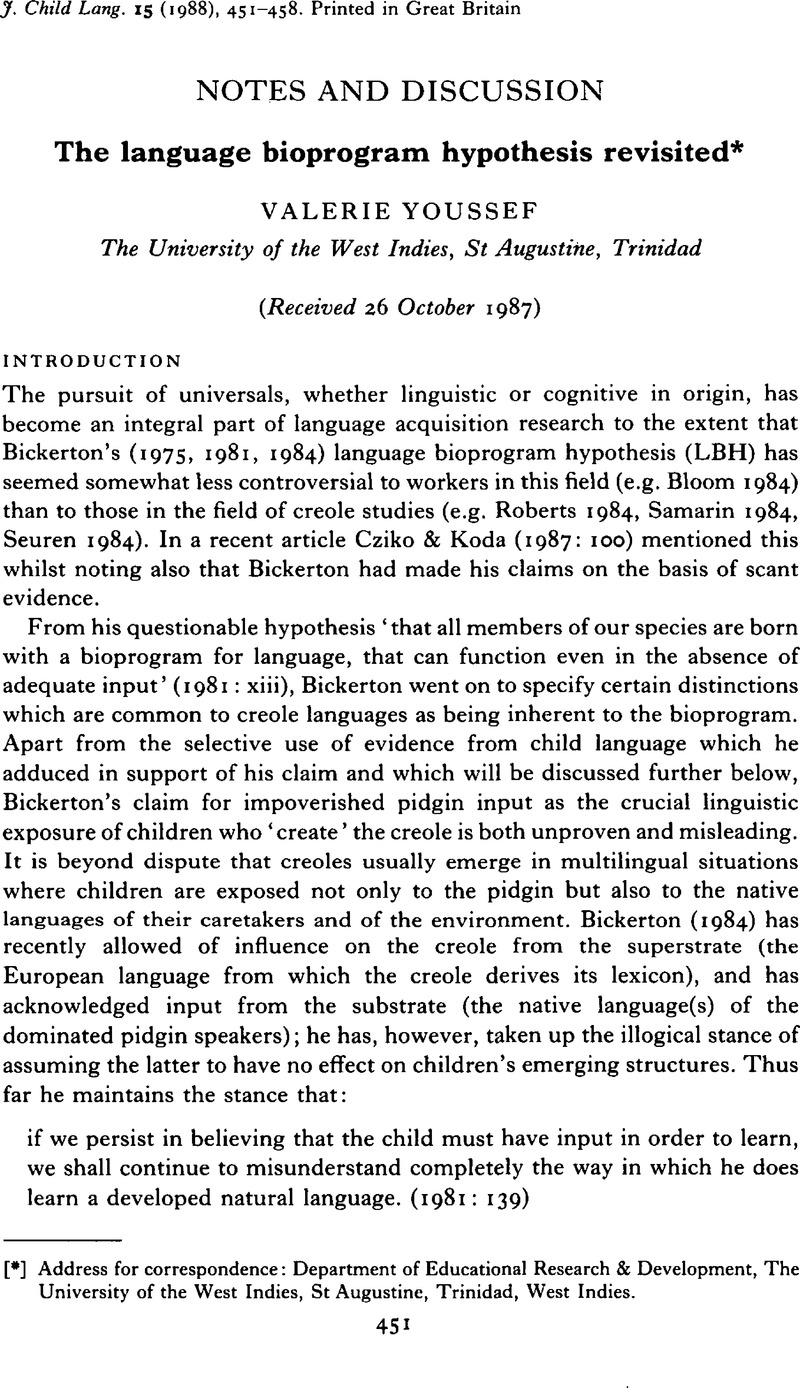Crossref Citations
This article has been cited by the following publications. This list is generated based on data provided by Crossref.
Cziko, Gary A.
1988.
The language bioprogram hypothesis: a reply to Youssef.
Journal of Child Language,
Vol. 15,
Issue. 3,
p.
669.
Kuczaj, Stan A.
1989.
On the search for universals of language acquisition: a commentary on Cziko.
First Language,
Vol. 9,
Issue. 25,
p.
39.
Youssef, Valerie
1990.
On the confirmation of bioprograms.
Journal of Child Language,
Vol. 17,
Issue. 1,
p.
233.
Youssef, Valerie
1991.
‘Can I put – I want a slippers to put on’: young children's development of request forms in a code-switching environment.
Journal of Child Language,
Vol. 18,
Issue. 3,
p.
609.
Shirai, Yasuhiro
1994.
On the overgeneralization of progressive marking on stative verbs: bioprogram or input?.
First Language,
Vol. 14,
Issue. 40,
p.
067.
Shirai, Yasuhiro
1994.
On the overgeneralization of progressive marking on stative verbs: bioprogram or input?.
First Language,
Vol. 14,
Issue. 42-43,
p.
067.
Krasinski, Emily
1995.
The development of past marking in a bilingual child and the punctual-nonpunctual distinction.
First Language,
Vol. 15,
Issue. 45,
p.
239.
Andersen, Roger W.
and
Shirai, Yasuhiro
1996.
Handbook of Second Language Acquisition.
p.
527.
Laub, Robert W.
2021.
Romance Languages and Linguistic Theory 2017.
Vol. 355,
Issue. ,
p.
193.



